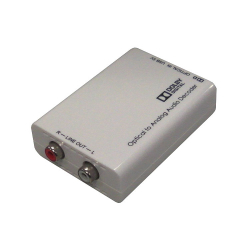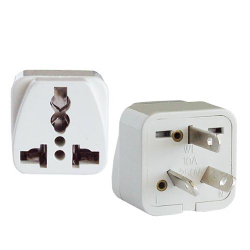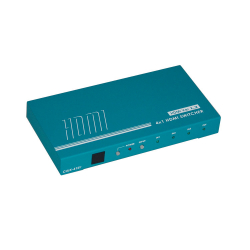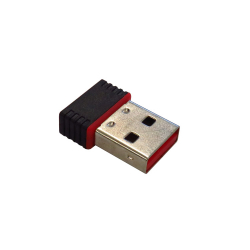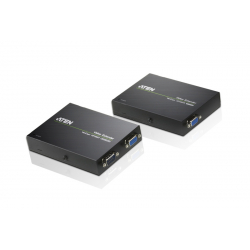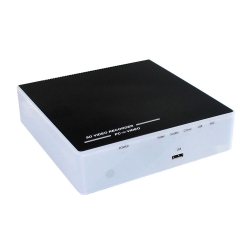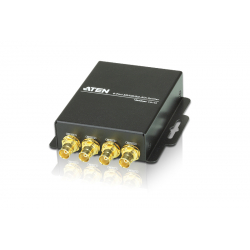A B C D E F G H I J K L M N O P Q R S T U V W X Y Z _
| Dolby (Surround) | Dolby Surround was the earliest consumer version of Dolby's multi channel analog film sound decoding format Dolby Stereo, introduced to the public in 1982. The system has four channels of audio information - left, centre, right, and mono surround – which are matrix-encoded onto two audio tracks. The stereo information is then carried on stereo sources such as videotapes, laserdiscs and television broadcasts from which the surround information can be decoded by a processor to recreate the original four-channel surround sound. |
| Dolby Digital | A family of multi-channel audio codecs/audio compression technologies from Dolby Laboratories, based on AC-3 technology. Dolby Digital includes several similar technologies, such as Dolby Digital EX, Dolby Digital Live, and Dolby Digital Plus. The most common of these is simply called 'Dolby Digital' which contains up to six discrete channels of sound. The most elaborate mode in common usage involves five channels for normal-range speakers (20 Hz – 20,000 Hz) (right front, centre, left front, right rear and left rear) and one channel (20 Hz – 120 Hz allotted audio) for the subwoofer driven low-frequency effects. |
| Dolby True HD | An advanced lossless multi-channel audio codec developed by Dolby Laboratories which is intended primarily for high-definition home-entertainment equipment such as Blu-ray Disc and HD DVD. Dolby TrueHD is a lossless audio format, meaning that no audio information is lost when the signal is compressed and uncompressed. It supports up to eight full-range channels of 24-bit/96 kHz audio. Dolby TrueHD competes with DTS-HD Master Audio, a similar lossless codec from Digital Theater Systems sound. It is the successor to the AC-3 Dolby Digital surround sound codec which was used as the audio standard for DVD discs. |
| DTS | DTS (Digital Theater Systems) is a company specialising in multichannel digital surround sound formats used for both commercial/theatrical and consumer grade applications. The term DTS usually refers to the multi-channel audio codecs from the company, including DTS, DTS-ES, DTS Neo:6, and DTS 96/24. DTS audio codecs are used in both commercial and home theatre applications. The basic and most common version of the format is a 5.1-channel system, which encodes the audio as five primary (full-range) channels plus a special LFE (low-frequency effect) channel for the subwoofer. However encoders and decoders can support numerous channel combinations. |
| DTS-HD Master Audio | The second of two DTS High Definition audio formats. It supports a virtually unlimited number of surround sound channels, can downmix to 5.1 and two-channel, and can deliver audio quality at bit rates up to lossless (24-bit, 192 kHz). DTS-HD Master Audio is selected as an optional surround sound format for Blu-ray and HD-DVD, where it has been limited to a maximum of 8 discrete channels. |
| DTV | Digital television (DTV) is the sending and receiving of moving images and sound by discrete (digital) signals, in contrast to the analog signals used by analog TV. Digital television supports many different picture formats defined by the combination of size, aspect ratio and interlacing. There are a number of different ways to receive digital television. One of the oldest means of receiving DTV is using an antenna/aerial. This way is known as Digital Terrestrial Television (DTT). With DTT, viewers are limited to whatever channels the antenna picks up. Signal quality will also vary. Other ways have been devised to receive digital television, including digital cable and digital satellite. Digital television broadcast standards include the DVB family used throughout Europe including DVB-S (satellite), DVB-T (terrestrial), and DVB-C (cable); the ATSC family used throughout North America including ATSC (terrestrial/cable) and ATSC-M/H (mobile/handheld); and the ISDB family used throughout Japan and South America including ISDB-S (satellite), ISDB-T (terrestrial) and ISDB-C (cable). |
| DVD | DVD (Digital Versatile Disc) is an optical disc storage media format. Its main uses are video and data storage. DVDs are of the same dimensions as compact discs (CDs), but store more than six times as much data. Variations of the term DVD often indicate the way data is stored on the discs: DVD-ROM (read only memory) has data that can only be read and not written; DVD-R and DVD+R (recordable) can record data only once, and then function as a DVD-ROM; DVD-RW (re-writable), DVD+RW, and DVD-RAM (random access memory) can all record and erase data multiple times. |
| DVD Region Code | A DRM (Digital Rights Management) technique designed to allow motion picture studios to control aspects of a release, including content, release date, and price, according to the region. DVD video discs may be encoded with a region code restricting the area of the world in which they can be played. The commercial DVD player specification requires that a player to be sold in a given place not play discs encoded for a different region, however region-free DVD players are also commercially available. |
| DVI | Digital Visual Interface (DVI) is a is a video interface standard designed to provide very high visual quality on digital display devices such as flat panel LCD computer displays and digital projectors. It was developed by an industry consortium to replace the "legacy analog technology" VGA connector standard. It is designed for carrying uncompressed digital video data to a display. It is partially compatible with the High-Definition Multimedia Interface (HDMI) standard in digital mode (DVI-D), and VGA in analog mode (DVI-A). A DVI-I connector transfers digital and analog VGA type signals on additional pins. |

